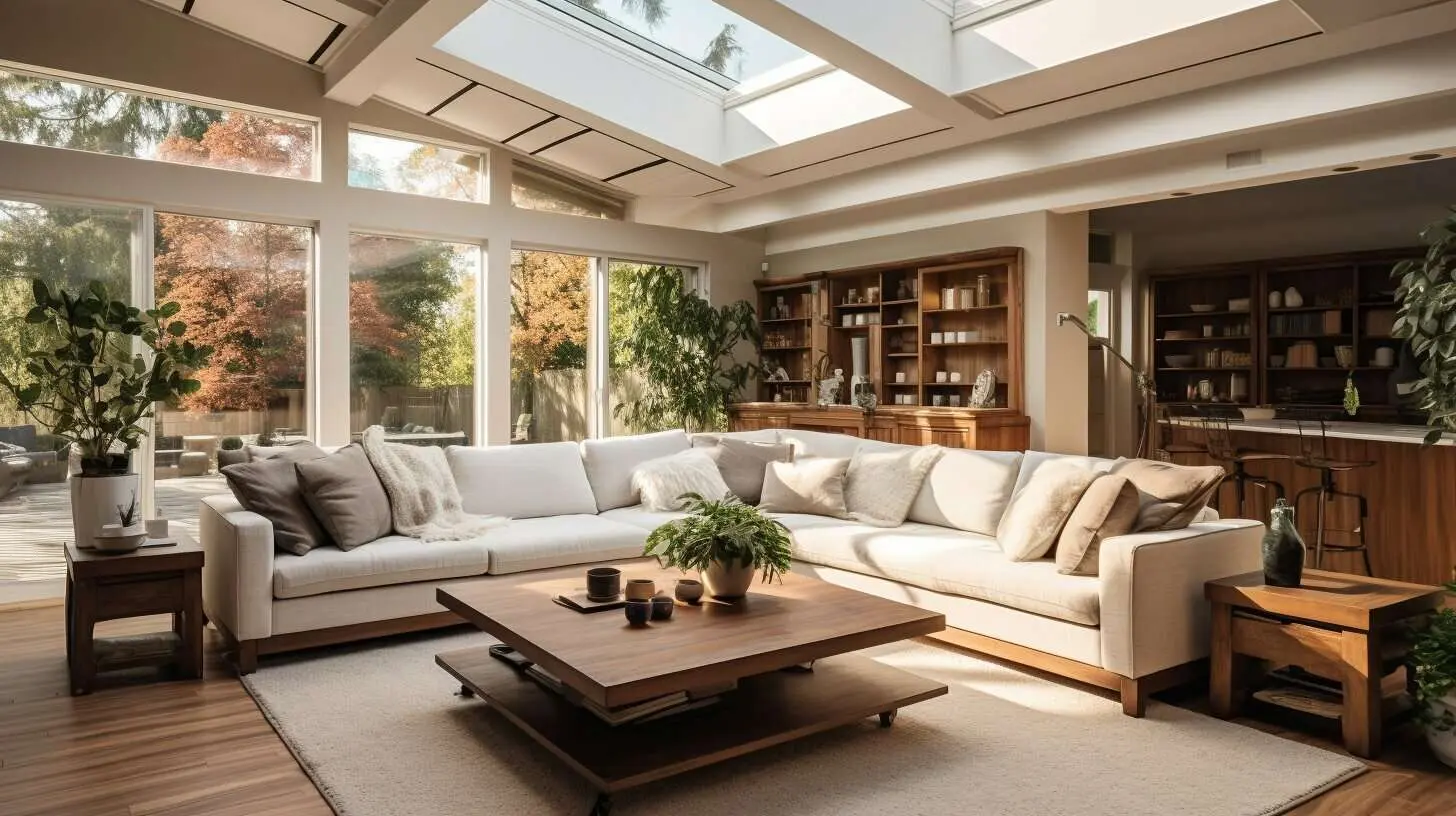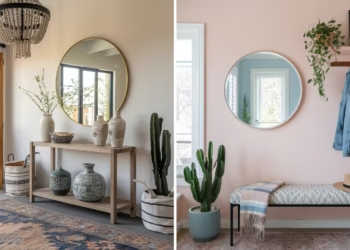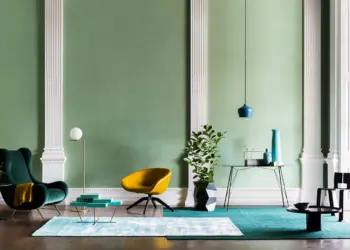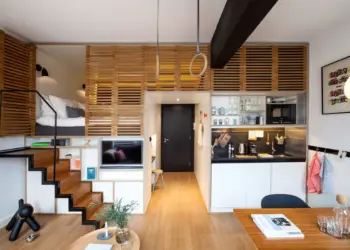The ceiling may seem like a minor detail when it comes to interior design, but in reality, it can make a massive impact on the overall look and feel of a space. The right ceiling design can add character, elegance, and even a touch of whimsy to any room, transforming it into a space that is not only functional but also visually appealing.
Are you looking to upgrade your home’s interior decor? Then look up and consider the ceiling! In this article, we will explore different types of ceiling designs, materials, and installation techniques. We will also provide tips on maintenance, repair, and budget-friendly ideas. Whether you’re looking to add some drama or simply want to create a cozy ambiance, we’ve got you covered! Let’s elevate your space with these stylish ceiling designs.
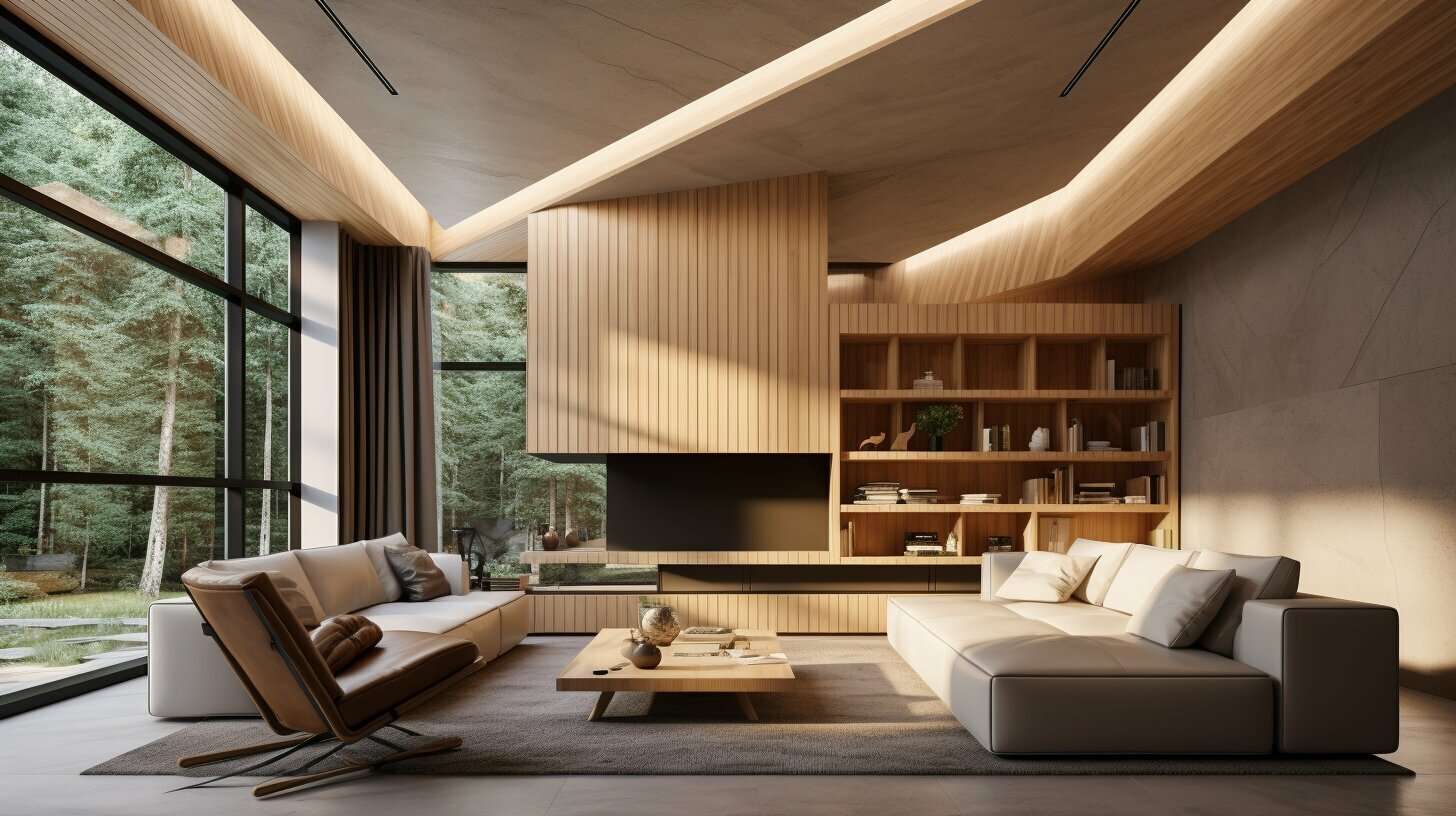
Choosing the Perfect Ceiling Design for Your Space
Choosing the right ceiling design can be the key to transforming any room in your home. With so many types, styles, and materials available, the possibilities are endless. Here are some tips to help you choose the perfect ceiling design for your space:
Consider the Purpose of the Room
When selecting a ceiling design, it’s essential to consider the purpose of the room. For example, a bedroom may benefit from a coffered or tray ceiling that adds depth and elegance, while a kitchen could benefit from a simple vaulted ceiling that creates a sense of spaciousness.
Match the Style of the Room
The ceiling should complement the style of the room and tie the whole look together. If you have a traditional home, a decorative ceiling medallion or ornate molding can add classic elegance. For a modern home, a sleek, minimalist design can create a clean and contemporary look.
Explore Different Materials
There are various ceiling materials available, from wood and metal to plaster and fabric. Each material can add a unique touch to your space and complement your interior design. For example, exposed wood beams can create a cozy and rustic vibe, while a metal ceiling gives an industrial edge.
Think About Lighting
The right lighting can enhance any ceiling design and create the perfect ambiance for your room. Consider installing recessed lighting or a statement chandelier to draw the eye up and showcase your ceiling’s unique features.
With these tips, you’re sure to find the perfect ceiling design that will elevate your space and make it uniquely yours.
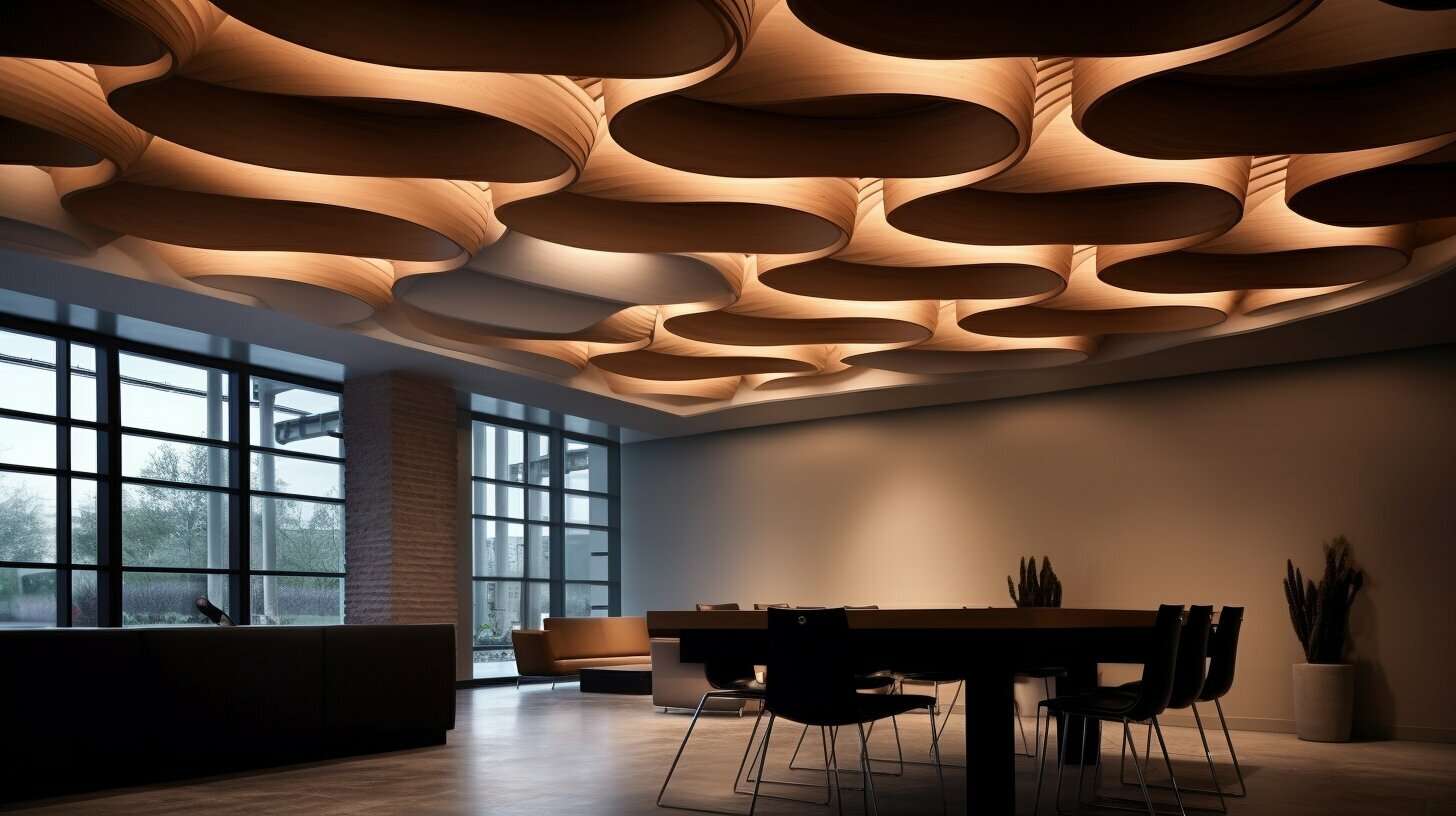
Exploring Creative Ceiling Materials
Your ceiling is an important element of your home’s interior design, and choosing the perfect material can add a unique touch to any room. Here, we explore some creative ceiling materials that can elevate the aesthetic appeal of your space:
Wood
Wooden ceilings add warmth and texture to a room, and are versatile enough to complement a variety of interior design styles. From rustic to modern, wood can create a statement piece that enhances the overall look and feel of your space. It’s also a durable and long-lasting material.
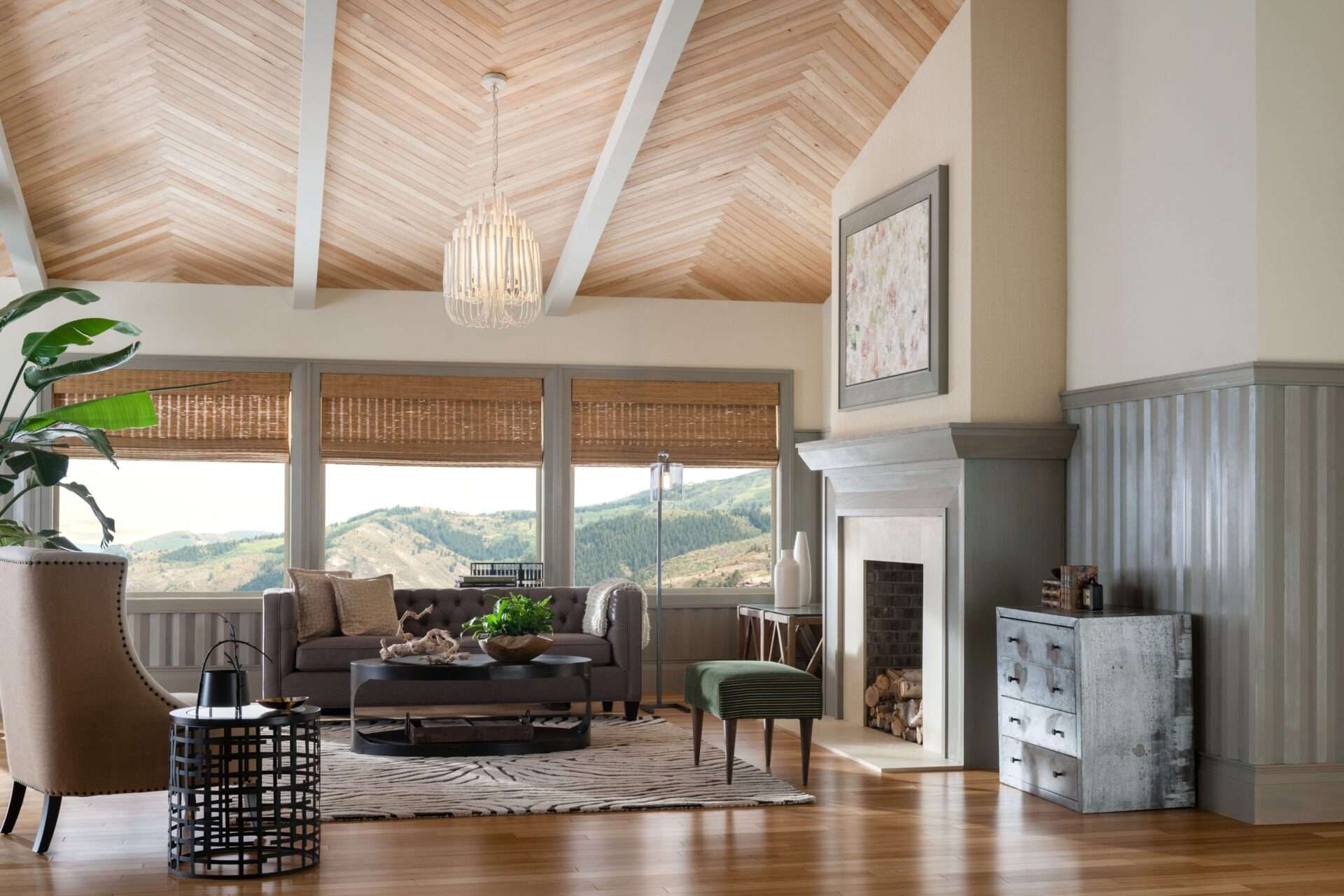
Metal
Metal ceilings offer a sleek and modern look that can instantly transform any room. With a range of finishes, from stainless steel to copper, metal can add a touch of sophistication that complements contemporary and industrial design styles. It’s also easy to clean and maintain.
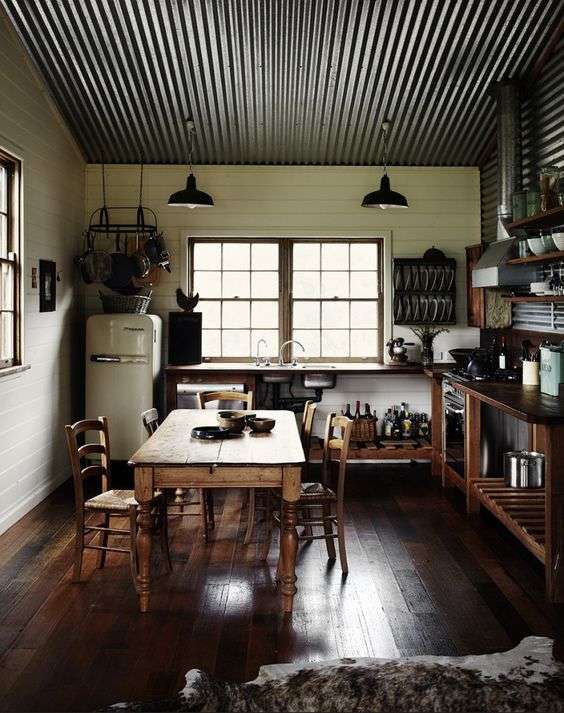
Plaster
Plaster is a classic ceiling material that can create a timeless and elegant look. It’s a versatile material that can be molded into different shapes and designs, allowing for a range of customized options. While installation can be more challenging, a plaster ceiling is a beautiful investment that can last for decades.
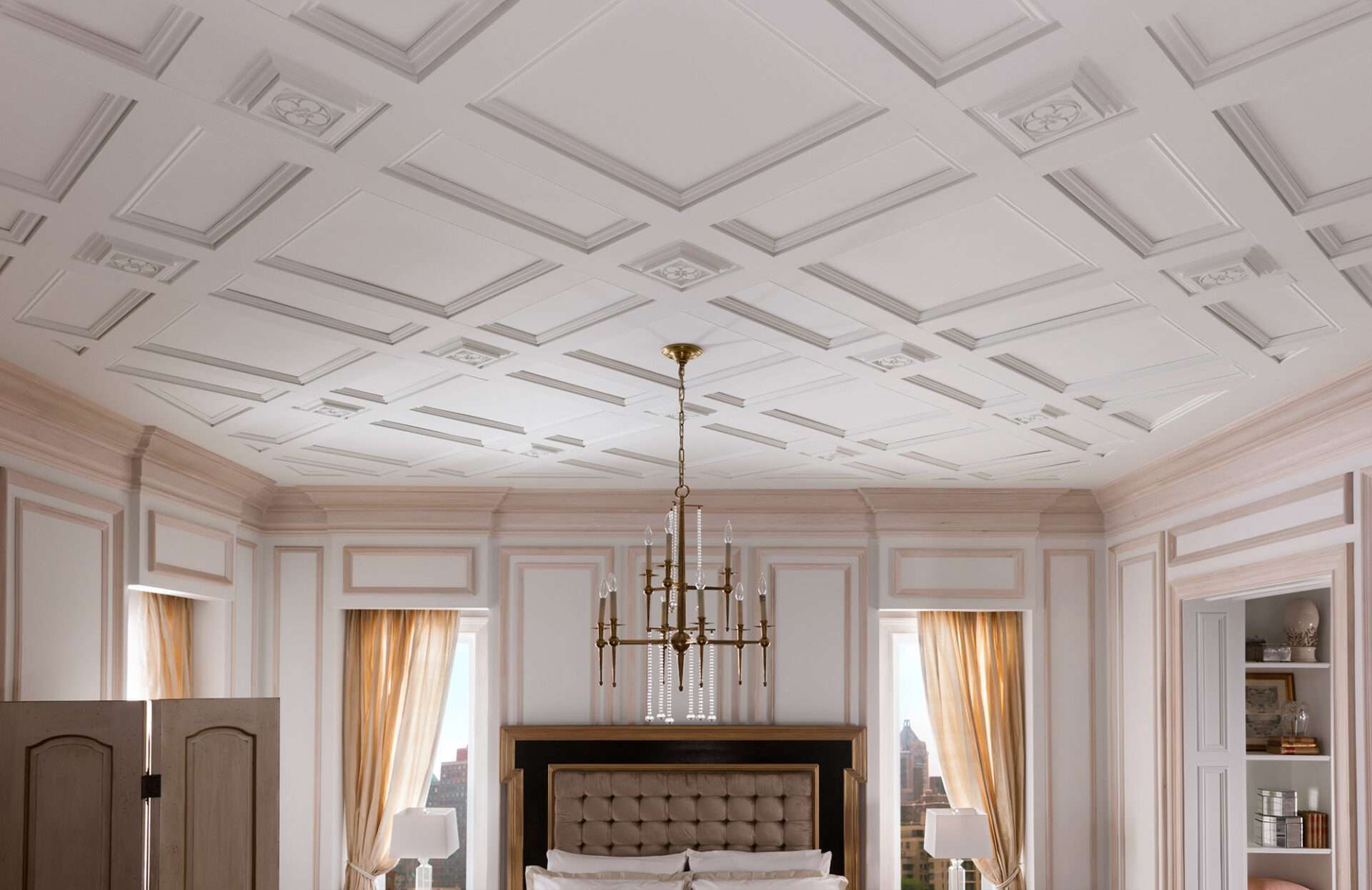
Glass
Glass ceilings are not just for commercial buildings – they can also add a unique touch to a residential space. Glass allows natural light to fill the room, creating a bright and open atmosphere. It can also be customized with different patterns or designs to suit your personal style.
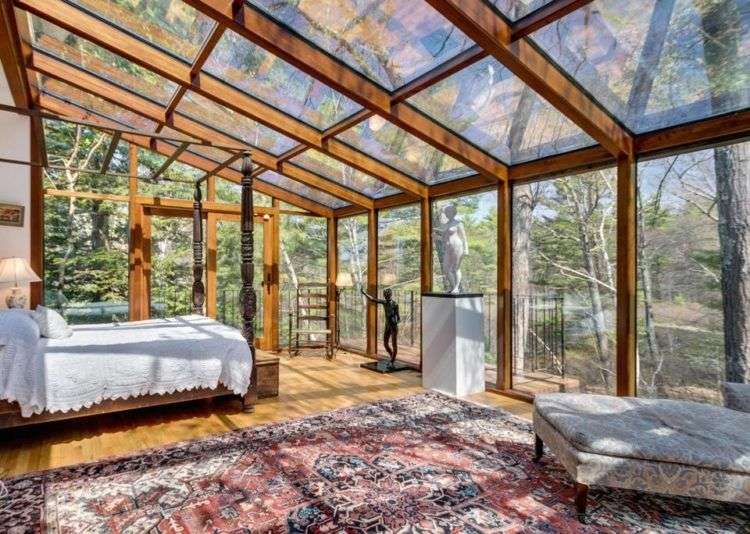
Fabric
For a soft and cozy feel, fabric ceilings can be a great choice. From draping fabric over a wooden frame to using fabric tiles, there are many ways to incorporate this material into your ceiling design. In addition to its aesthetic appeal, fabric can also provide sound insulation and improve acoustics in a room.

“Choosing the right ceiling material can completely transform the look and feel of any room in your home. Don’t be afraid to explore unique and creative options to find the perfect fit for your personal style.”
The Art of Ceiling Installation
Installing a new ceiling can be a daunting task, but with proper preparation and execution, it can result in a stunning transformation of your space. Whether you are a seasoned DIY enthusiast or considering hiring professionals, understanding the process of ceiling installation is crucial to ensure a smooth and successful project.
Preparation
Before starting the installation process, it is important to prepare the room properly. First, remove any furniture or objects that could obstruct the installation area. Cover the floors and any other items with protective materials to prevent damage.
Next, gather all necessary tools and materials. The specific tools and materials needed will depend on the type of ceiling being installed, but common items include a saw, ladder, drill, screws, and drywall. Read the installation instructions carefully and make sure you have everything you need.
Installation
Depending on the type of ceiling being installed, the steps can vary. However, generally, the first step is to measure and mark the area where the ceiling will be installed. Install the support structure, then add the new surface on top, whether it is drywall, tiles, or planks.
“Properly sealing around any vents or light fixtures is essential to a successful installation.”
Make sure to pay attention to details such as cutting the material to fit the room’s shape and properly sealing around any vents or light fixtures. Take your time and double-check everything as you go along to avoid mistakes.
Finishing Touches
Once the installation process is complete, it’s time to add the finishing touches. This can include priming, painting, or adding decorative details.
“Adding a pop of color or a unique design can truly enhance the overall look of the room.”
Adding a pop of color or a unique design can truly enhance the overall look of the room. Consider using patterns or textures to create a distinctive look that complements your interior design style.
While the process of ceiling installation may seem daunting, it can be a fun and rewarding project that transforms the look and feel of your space. With proper preparation, execution, and finishing touches, you can achieve a beautiful and functional ceiling that complements your style and personal taste.
Enhancing Your Ceiling with Paint
Your ceiling is often overlooked when it comes to interior design, but painting it can make a huge impact on the overall look and feel of a room. A freshly painted ceiling can add depth and dimension, making the space feel larger and more inviting. With a little creativity and some elbow grease, you can easily transform your dull ceiling into a stunning focal point.
Painting Techniques:
When it comes to painting your ceiling, there are a few techniques you can use to achieve different effects. A flat finish paint is a popular choice as it hides imperfections and creates a smooth, matte surface. However, if you want to add some texture or drama to your ceiling, consider using a high-gloss or metallic paint. These finishes reflect light, adding brightness and radiance to your room. Another technique is to paint your ceiling a different color than your walls, creating a bold contrast that can make your ceiling pop.
Tip: When painting your ceiling, it’s essential to prep the surface properly. Ensure that it’s clean, smooth, and free of any cracks or holes. Cover your floors and furniture with drop cloths to protect them from paint splatters. If you’re using a different color than your walls, tape off the edges carefully to avoid any unwanted bleeding.
Color Choices:
When choosing a color for your ceiling, consider your overall design scheme. If you want to create a bright, airy space, opt for a light, neutral tone such as white or beige. If you want to add warmth and richness to your room, consider using a soft shade of blue or green. If you’re feeling bold, go for a dark or vibrant hue like navy blue or emerald green. Just remember that darker colors may make the room feel smaller, so use them sparingly.
Finishes:
The finish of your paint can also affect the overall look of your ceiling. A flat or matte finish will make the ceiling look more refined and elegant, while a high-gloss finish will create a dramatic, lacquered effect. A satin or eggshell finish is a happy medium and works well in most rooms.
Repairing and Maintaining Your Ceiling
Just like any other part of your home, your ceiling requires regular maintenance to ensure its longevity and beauty. While some issues may require professional help, many can be easily fixed on your own with the right tools and techniques. Here are some tips on how to identify and troubleshoot common ceiling problems:
Identifying Cracks
Cracks on your ceiling can be caused by a variety of factors such as settling of the house, temperature changes, or even natural wear and tear. To identify cracks, inspect your ceiling for any lines or crevices. If you find any, use a putty knife to widen the crack and remove any loose debris. Then, fill the crack with a joint compound using a putty knife, smooth it out, and let it dry.
Fixing Water Damage
Water damage is a common problem that can cause your ceiling to sag or form brown stains. To fix this issue, identify and fix the source of the water (e.g. leaky roof or pipes). Then, cut out the damaged area of the ceiling using a drywall saw. Next, install a new piece of drywall or plaster and finish it off with a coat of joint compound, sanding it smooth before painting.
Sagging Ceilings
If your ceiling is sagging, it may be due to water damage, improper installation, or excessive weight. To fix this, first, remove any furniture or items that may be contributing to the sag. Then, use a screwdriver to locate the ceiling joists and attach a supportive brace. Finally, cut and install a new piece of drywall or plaster over the brace, finishing it off with joint compound and paint.
Regular maintenance can prevent many ceiling problems from occurring in the first place. To keep your ceiling in top shape, clean it regularly with a soft cloth or vacuum, avoid hanging heavy items, and keep an eye out for any signs of damage. By addressing issues quickly and efficiently, you can ensure that your ceiling remains a beautiful and functional part of your home for years to come.

Ceiling Lighting Solutions to Elevate Your Space
Your ceiling design isn’t just about aesthetics – it also plays a crucial role in the functionality of a room. And one key aspect of functionality is lighting. Proper ceiling lighting can elevate the ambiance and provide essential task lighting for various activities.
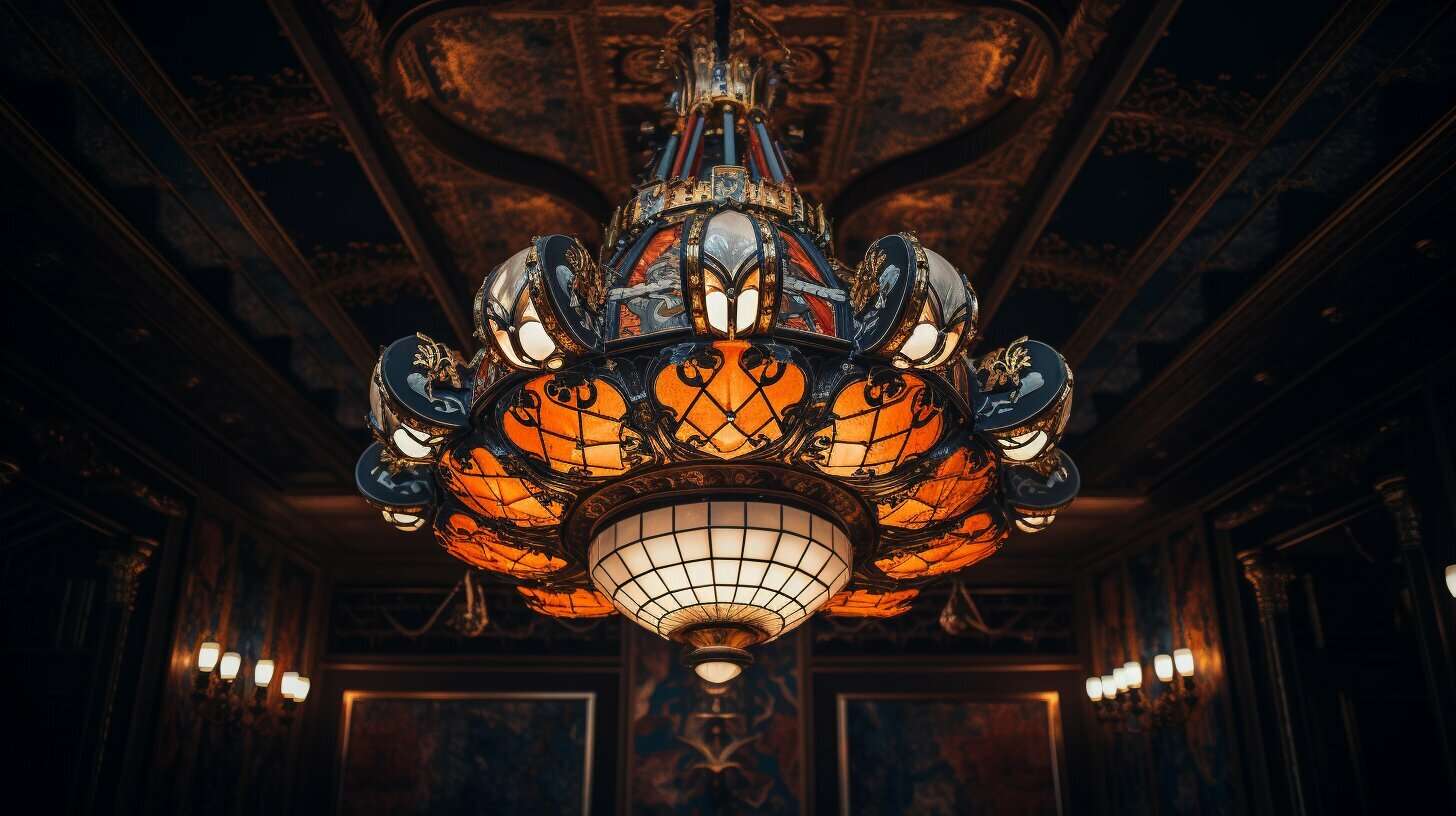
Recessed lights are a popular choice for their sleek and unobtrusive look, while chandeliers exude elegance and sophistication. Pendant lamps can add a pop of color or texture, while track lighting offers flexibility and adjustability. Whatever your preference, there are countless ceiling lighting solutions to choose from that can complement your ceiling design and enhance the overall atmosphere of your space.
“Light creates ambience and feel of a place, as well as the expression of a structure.” – Tadao Ando
Consider the purpose and style of the room when selecting lighting fixtures. For a cozy living room, warm and inviting light sources like table lamps or wall sconces can create an intimate atmosphere. In a kitchen or workspace, task lighting should be bright and focused to make it easier to perform daily tasks.
The possibilities are endless – get creative with your ceiling lighting and find the perfect solution to elevate your space.
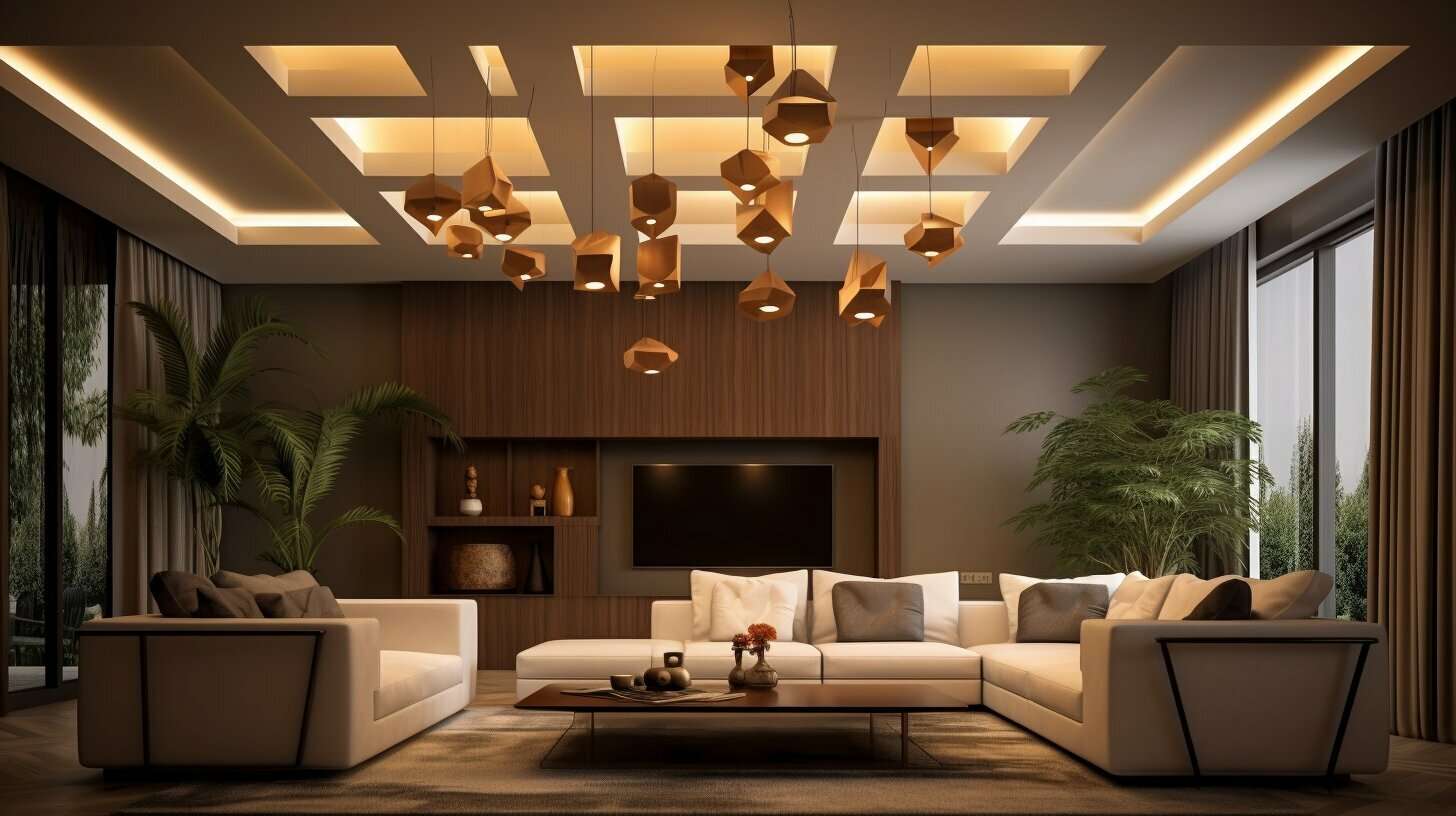
Creative Ceiling Design Ideas for Different Rooms
Ceilings can completely transform the look and feel of any room in your home. Whether you want to create a cozy, intimate space or a bold, dramatic statement, there are numerous creative ceiling design ideas that can help you achieve your desired effect. Here are some inspirational ideas for different rooms in your home:
Living Room Ceiling
A coffered ceiling can add dimension and depth to your living room, making it feel more spacious and sophisticated. For a more rustic feel, consider installing wooden beams that complement your furniture and decor. A statement light fixture, like a chandelier, can also serve as a focal point and add character to your ceiling.
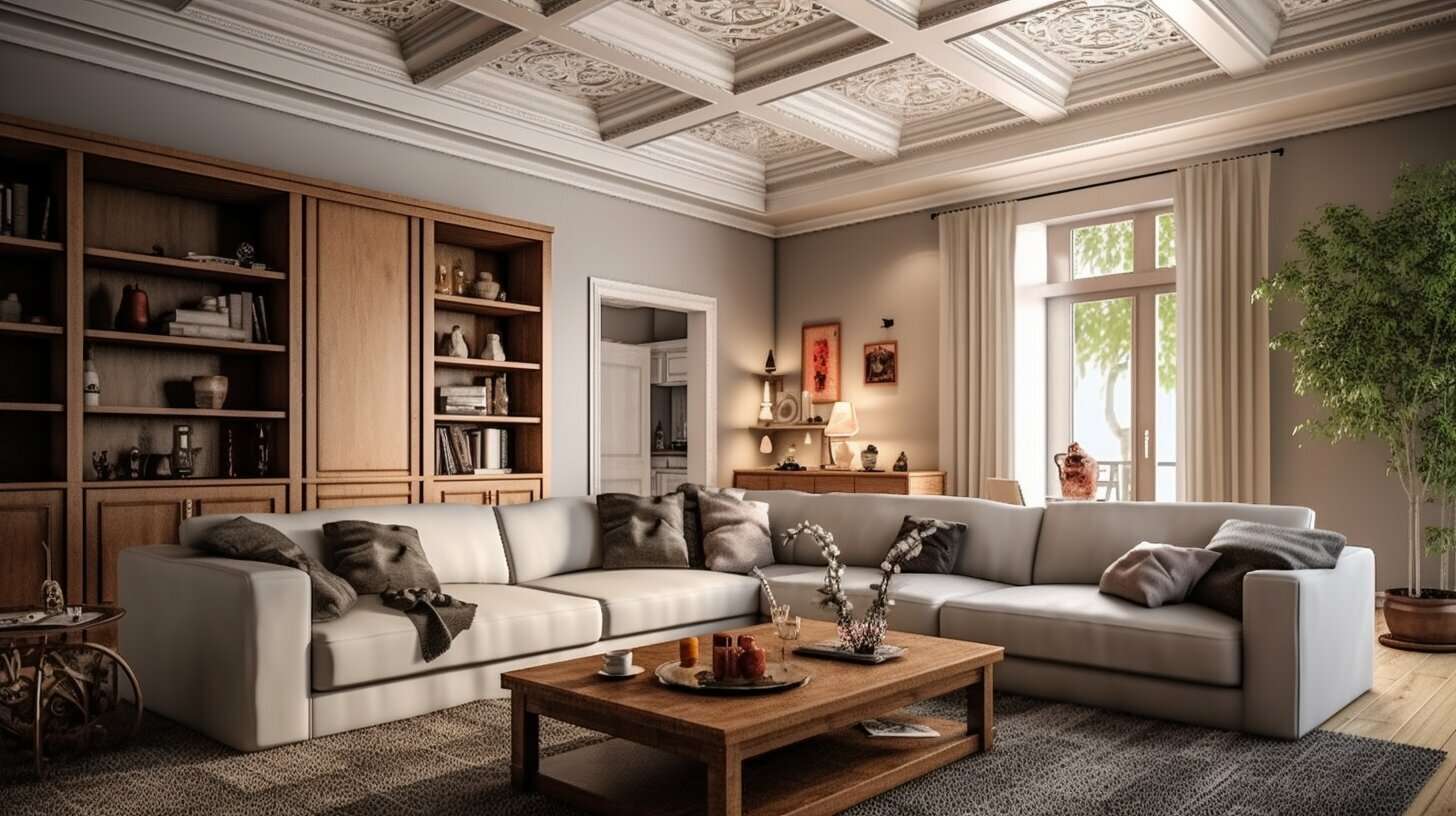
Bedroom Ceiling
A tray ceiling can add elegance and glamour to your bedroom, creating a luxurious, spa-like ambiance. Alternatively, a painted ceiling with a bold color or pattern can add a playful and whimsical touch to your space. For a cozy, intimate feel, consider installing a ceiling fan with dimmable lights that can create the perfect mood.
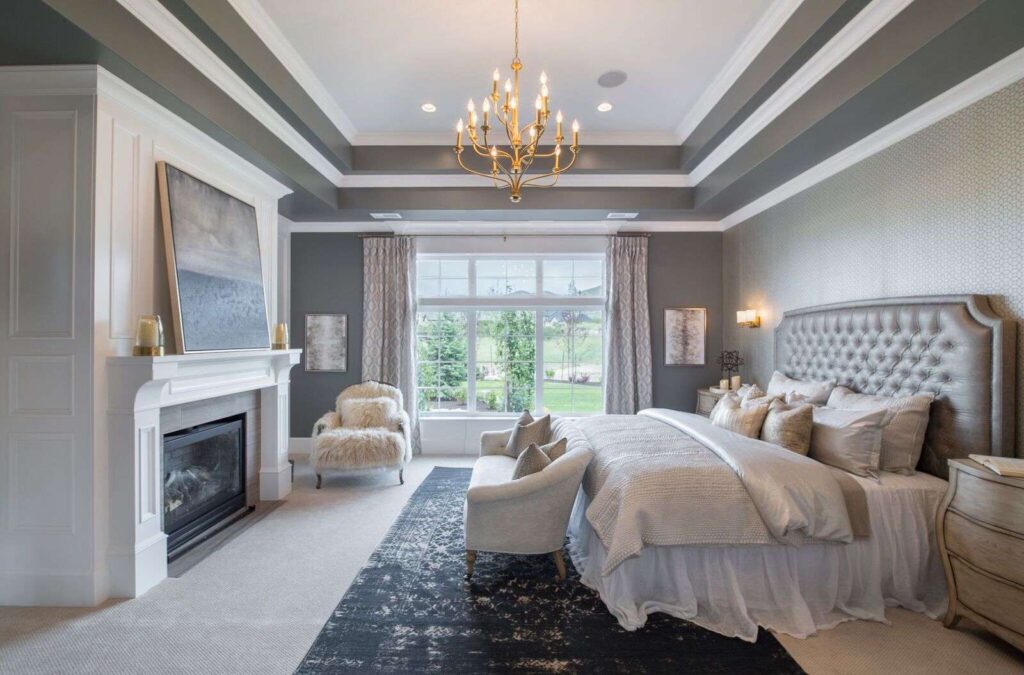
Kitchen Ceiling
A tin ceiling can add a vintage, industrial charm to your kitchen, while a skylight can bring in natural light and make your space feel larger and brighter. For a more modern look, consider installing a minimalist drop ceiling with recessed lights that can create a sleek and streamlined effect.
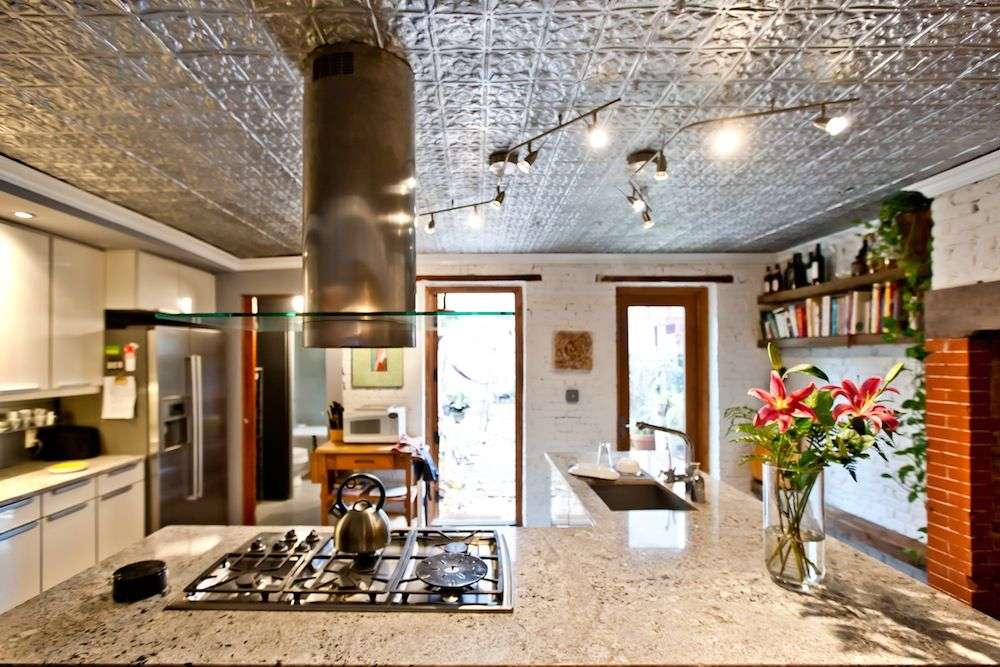
Bathroom Ceiling
A coffered ceiling with a beadboard finish can add a classic, elegant touch to your bathroom, while a painted ceiling with a soft, pastel color can create a serene and calming atmosphere. Installing a pendant light or a series of sconces can also provide optimal lighting for your bathroom routine.
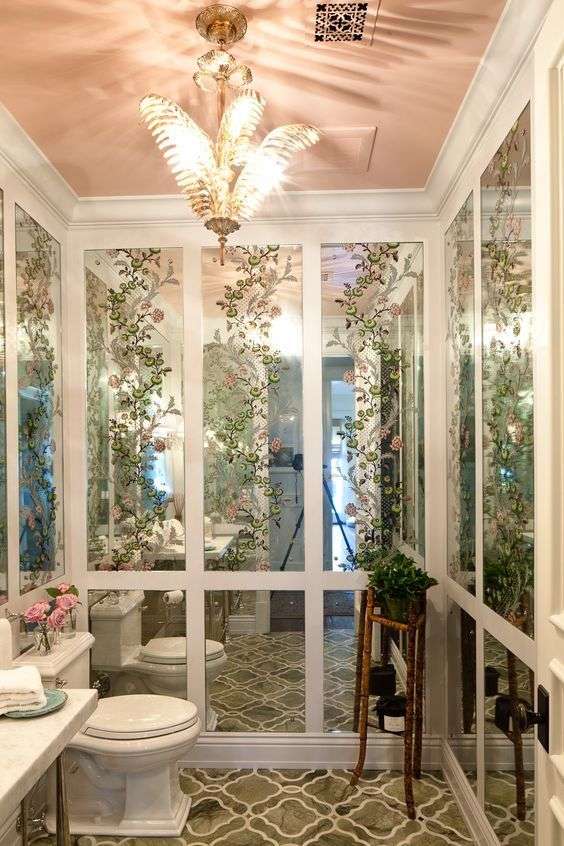
Budget-Friendly Ceiling Design Tips and Tricks
Transforming your ceilings doesn’t have to break the bank. With these budget-friendly ceiling design tips and tricks, you can refresh your space without compromising style or quality.
1. Paint Your Ceilings
One of the most affordable ways to update your ceiling is to paint it. Choose a color that complements your walls and furniture, and don’t be afraid to add some texture with a textured paint or faux finish. This simple update can make a huge impact on the overall look and feel of your room.
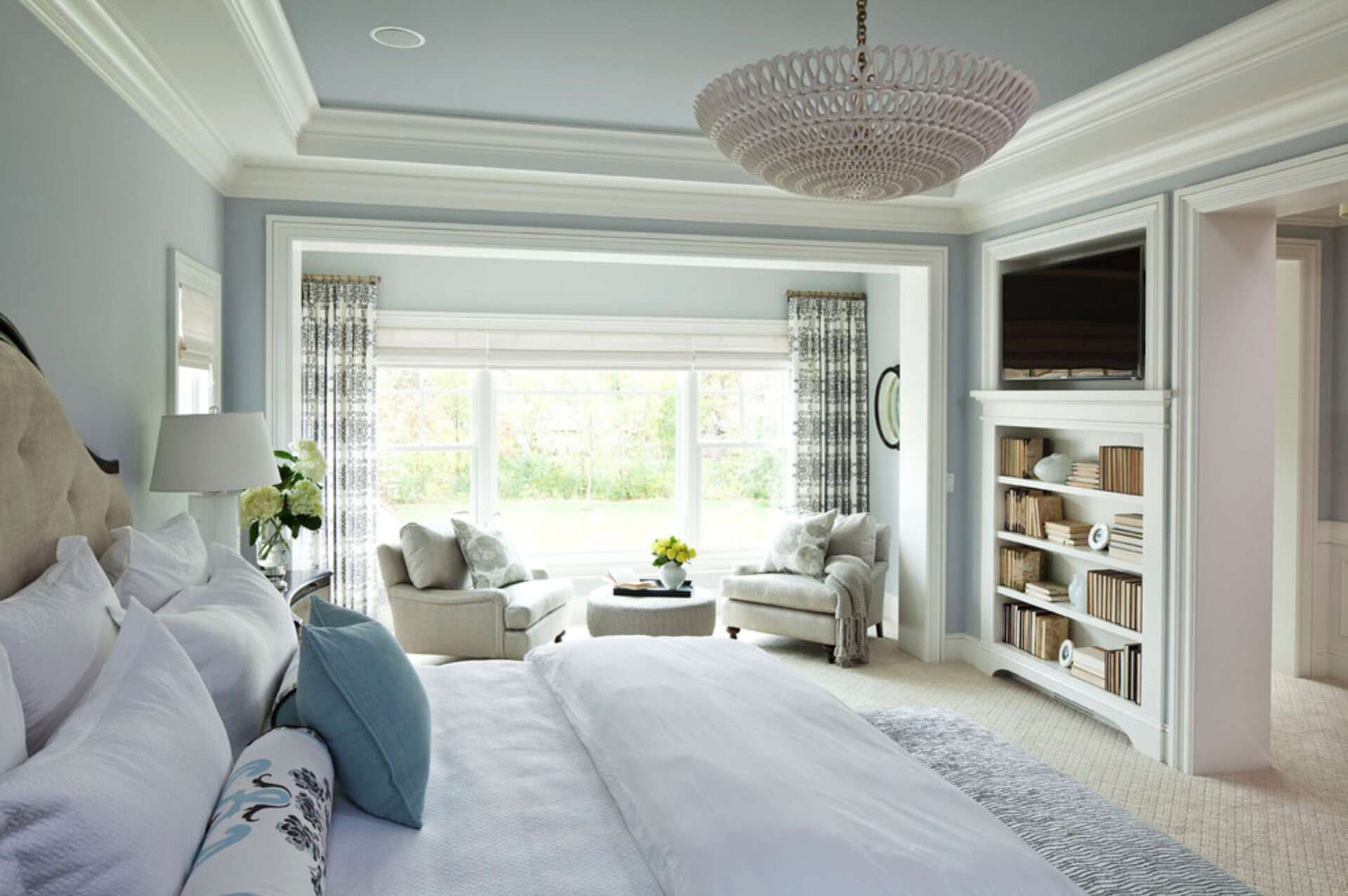
2. Use Wallpaper
Another creative way to add some personality and style to your ceilings is to use wallpaper. Whether you opt for a bold print or a subtle texture, wallpaper can add some dimension and interest to your space.
Also using wallpaper on the ceiling can transform your space by adding a unique visual focal point and introducing depth and texture. It allows for personalization through a variety of patterns and colors that align with your style. Wallpapered ceilings can create the illusion of greater height, contribute to a cohesive design, and even mimic architectural features. Whether you’re aiming for drama, elegance, or ambiance, a well-chosen wallpaper can enhance the overall look and feel of the room.
This cost-effective approach offers versatility and can make a significant impact, particularly in smaller or less traditionally decorated spaces. Just ensure proper selection and application for a stunning and memorable design element.
Consider using removable wallpaper for an easy and temporary solution.
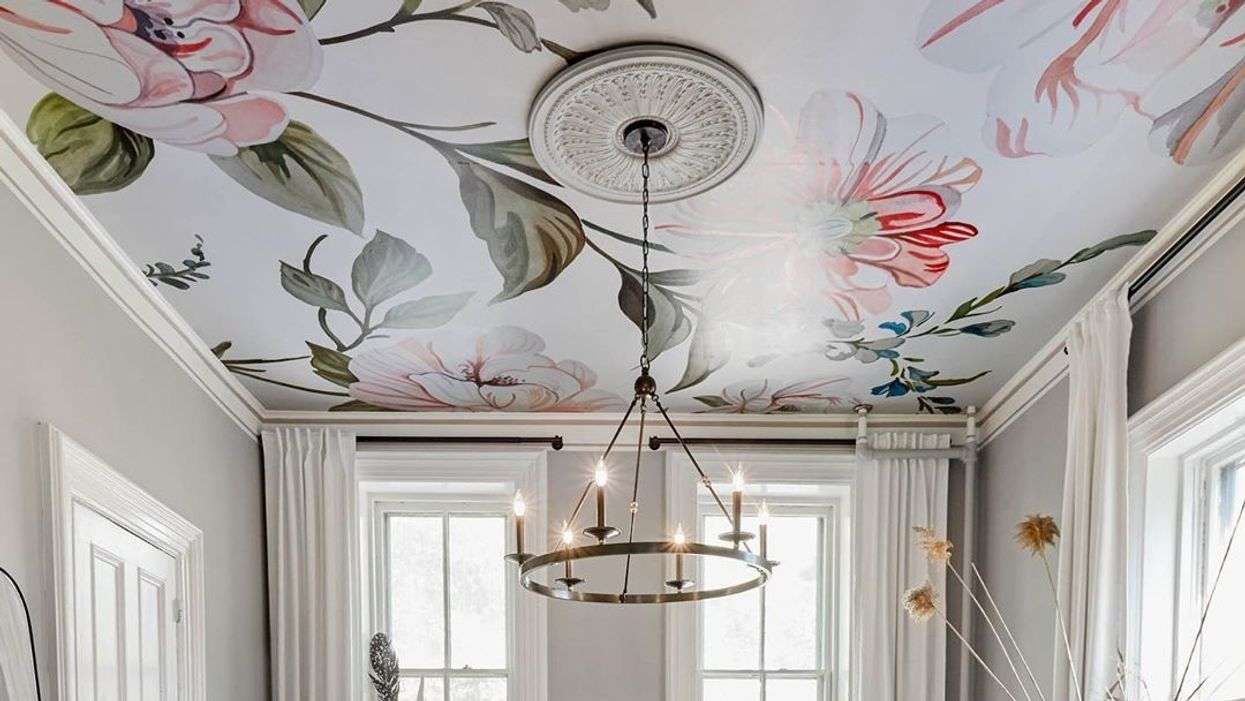
3. Install Crown Molding
Crown molding is a classic and timeless addition to any ceiling. It adds a touch of elegance and sophistication to your space, and can be installed for a relatively low cost. Choose a style that complements your existing decor and install it yourself or hire a professional for a flawless finish.
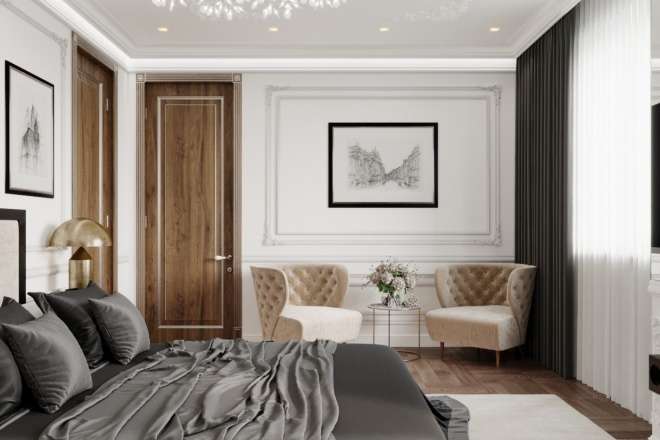
4. Add Some Beams
If you want to create a rustic or industrial look, consider adding some faux beams to your ceiling. There are many different styles and materials to choose from, and they can be installed quickly and easily with some basic tools and hardware.

5. DIY Your Own Ceiling Medallion
Ceiling medallions are a beautiful and unique addition to any ceiling. Instead of buying an expensive one, make your own with some inexpensive materials like cardboard, paint, and glue. There are many tutorials available online to guide you through the process.
With these budget-friendly ceiling design tips and tricks, you can transform your space into a stylish and personalized sanctuary without spending a fortune. Get creative and have fun!
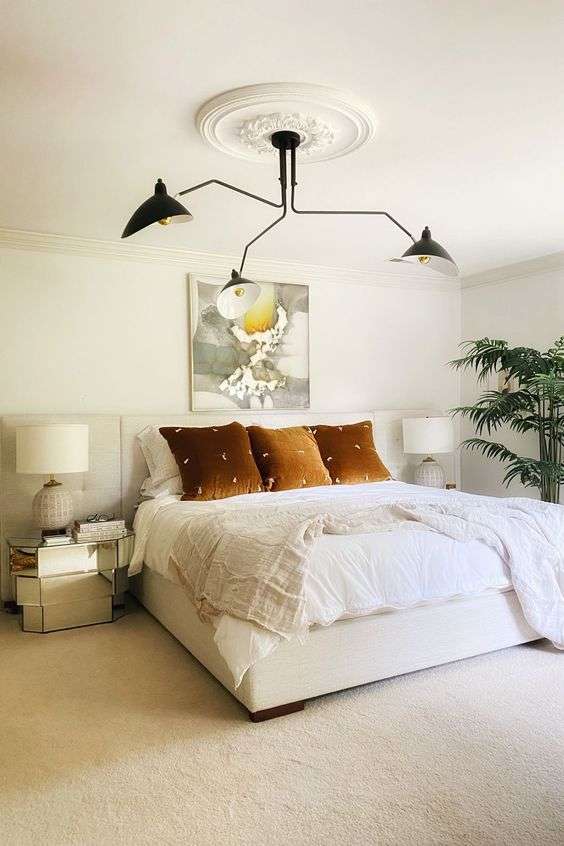
Conclusion
Ceiling design can completely transform the look and feel of any room in your home. It’s a crucial aspect of interior decor that shouldn’t be overlooked. By exploring different ceiling ideas, types, styles, and materials, you can create unique and captivating spaces that reflect your personal taste.
Remember to consider the installation process, painting, maintenance, and lighting solutions when designing your ceiling. With the right techniques and tools, you can achieve professional-looking results, whether it’s a DIY project or done by professionals.
Take the Leap of Creativity
Don’t be afraid to take risks and explore your creativity when it comes to ceiling design. From enhancing the ambiance of a room with lighting, to using unconventional materials, the possibilities are endless. So go ahead and transform your space into a unique and captivating masterpiece that you’ll love for years to come!
FAQ
Q: What are the benefits of choosing a stylish ceiling design for my home?
A: Stylish ceiling designs can completely transform the look and feel of any room in your home. They add a touch of elegance, create a sense of space, and enhance the overall aesthetic appeal of your space.
Q: How do I choose the perfect ceiling design for my space?
A: When choosing a ceiling design, consider your personal taste and the overall interior design of your home. Explore different ideas, types, and styles to find the one that best complements your space and enhances its overall ambiance.
Q: What creative ceiling materials can I use in my home?
A: There are various creative ceiling materials you can use, such as wood, metal, plaster, glass, and fabric. Each material has its own aesthetic appeal, durability, and suitability for different rooms in your home.
Q: How do I install a ceiling?
A: Installing a ceiling requires following a set of necessary steps, using the right tools, and employing proper techniques. Whether you choose to do it yourself or hire professionals, this section will provide valuable tips to ensure a successful installation process.
Q: What are some tips for enhancing my ceiling with paint?
A: Painting your ceiling can significantly enhance its aesthetic appeal. This section will provide tips on different painting techniques, color choices, and finishes that can elevate the overall look of your space. It will also offer advice on how to achieve professional-looking results.
Q: How can I repair and maintain my ceiling?
A: Regular maintenance and occasional repairs are necessary to keep your ceiling in top shape. This section will discuss common issues like cracks, water damage, and sagging, along with practical tips on troubleshooting, fixing, and preventing future problems.
Q: What are some ceiling lighting solutions to elevate my space?
A: Proper ceiling lighting can elevate the ambiance and functionality of any room. This section will explore various lighting options, including recessed lights, chandeliers, pendant lamps, and track lighting, providing guidance on choosing fixtures that complement your ceiling design.
Q: Can you provide creative ceiling design ideas for different rooms?
A: Absolutely! This section offers creative ceiling design ideas tailored to specific rooms in your home, such as living rooms, bedrooms, kitchens, and bathrooms. It aims to inspire you to make each space unique and captivating through innovative ceiling designs.
Q: Are there any budget-friendly ceiling design tips and tricks?
A: Yes, designing your ceiling doesn’t have to be expensive. This section focuses on budget-friendly tips and tricks, exploring affordable materials, DIY projects, and creative alternatives that can achieve stunning results without compromising on style or quality.
